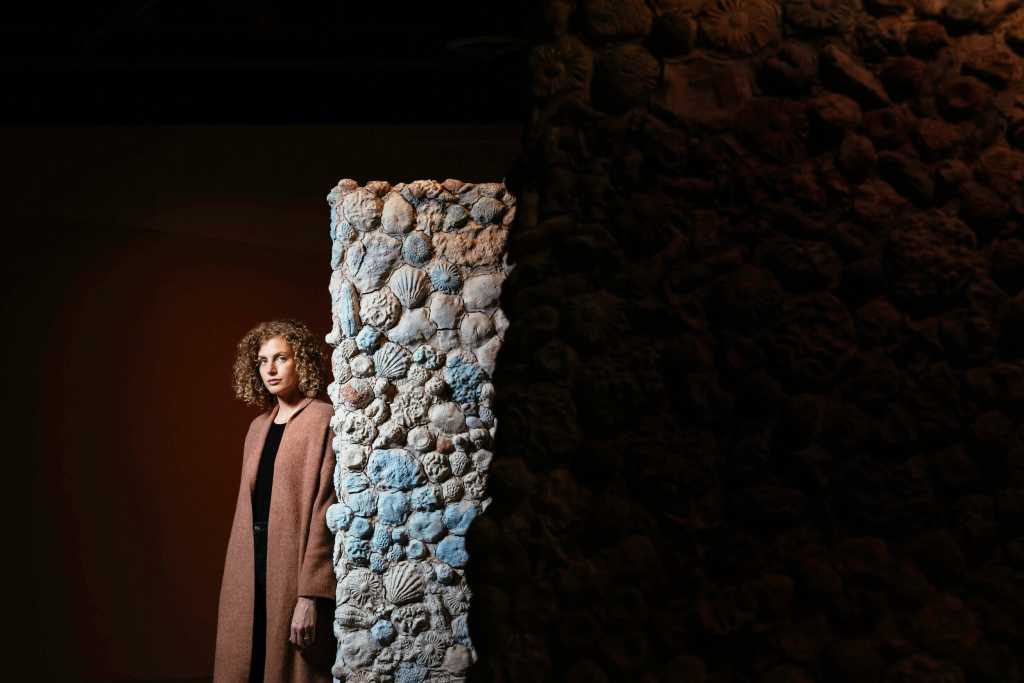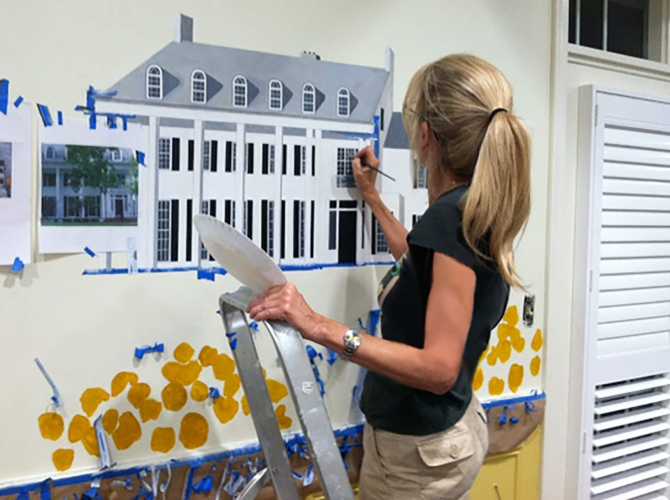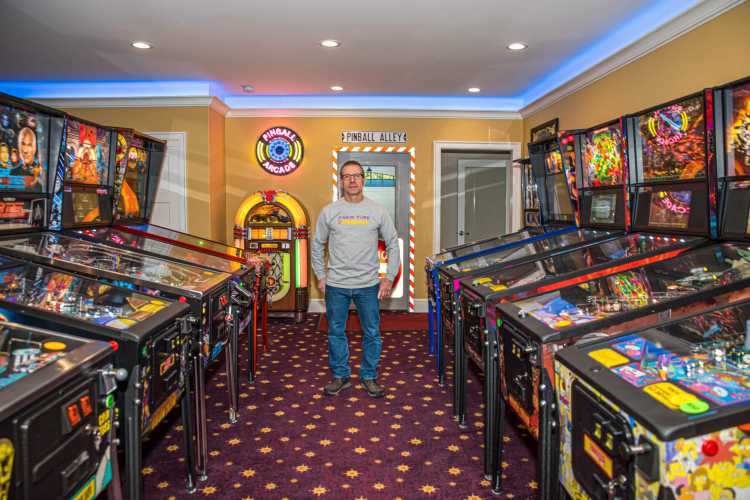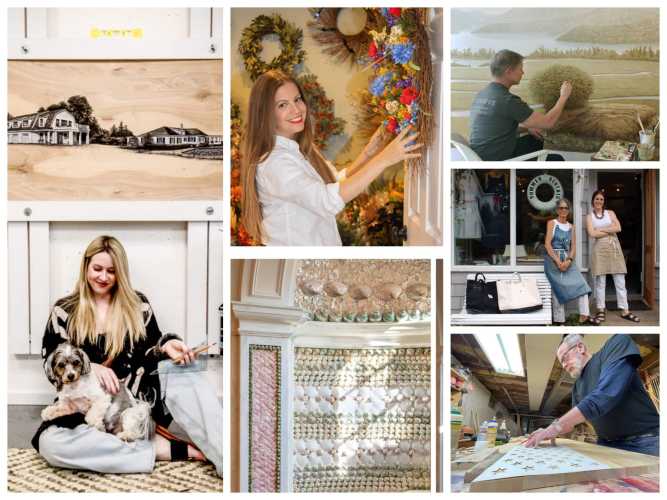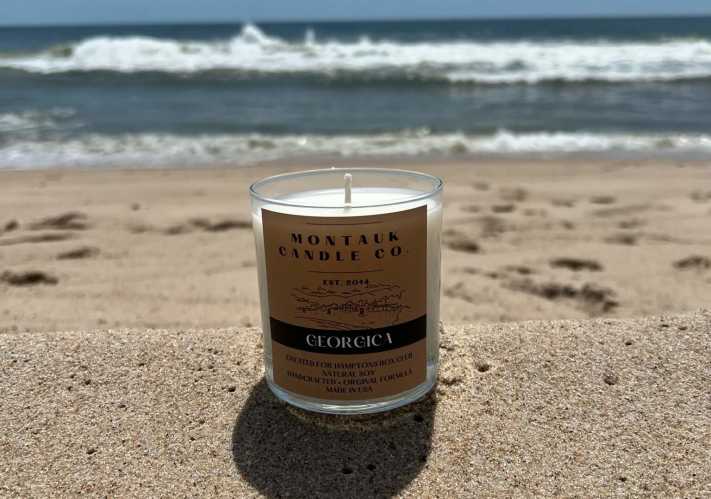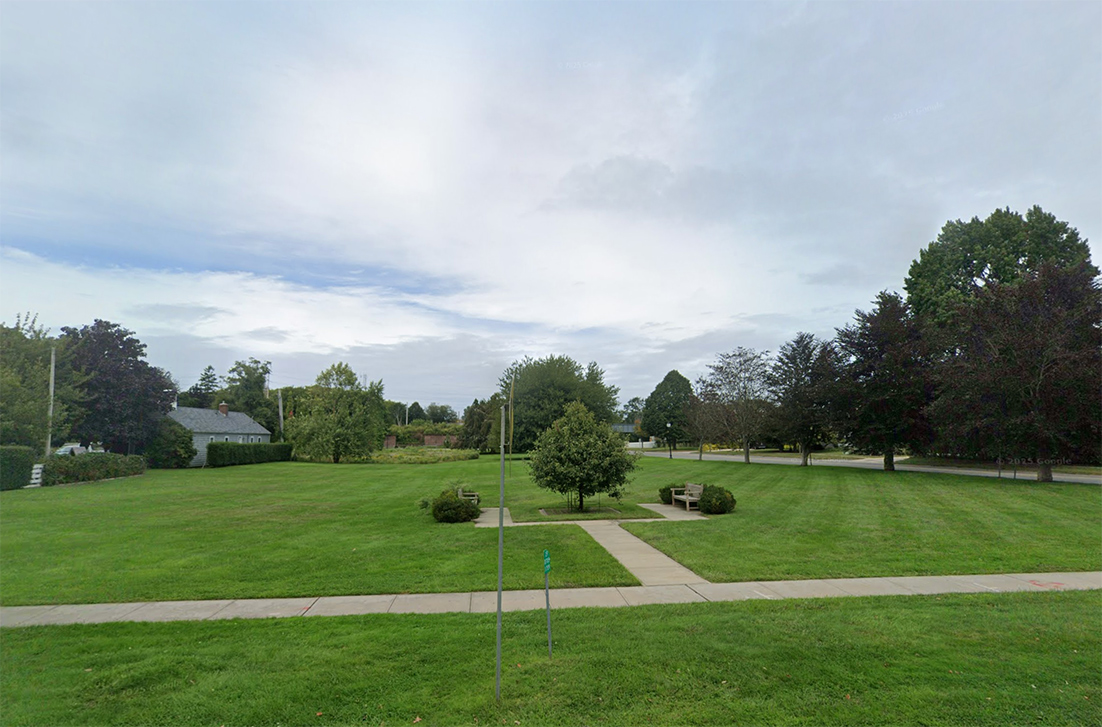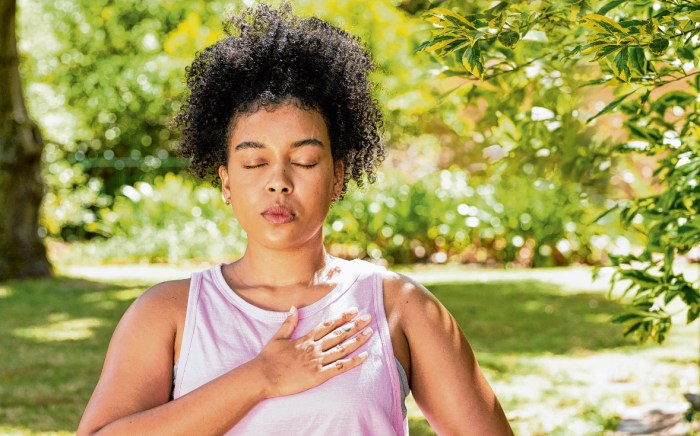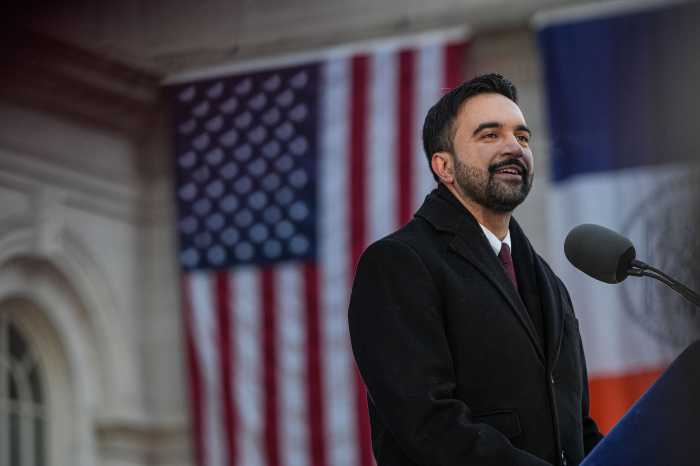South Florida-based visual artist Lauren Shapiro combines ceramics, technology and science to create modular sculptures and installations that, she says, reference systems and visual orders found in nature.
Utilizing a multi-step casting process in clay to make artwork both big and small, she often creates for public spaces and always draws inspiration from environmental research and data.
Also an educator, Shapiro leads community-based projects where participants hand-mold clay structures into site-specific arrangements that create awareness. As a Floridian, she is keenly aware of the growing climate pressures on tropical populations and she hopes her work draws attention to the issues and inspires solutions for the changing landscape.
“It’s really about connecting people with the material and with the environment,” she says.
“I grew up in Florida — I’ve been here my whole life. I’ve traveled quite a bit, but I’m based in Miami,” she says. She has been creating ceramics for about 15 to 20 years and she earned a master’s in fine arts from the University of Miami.
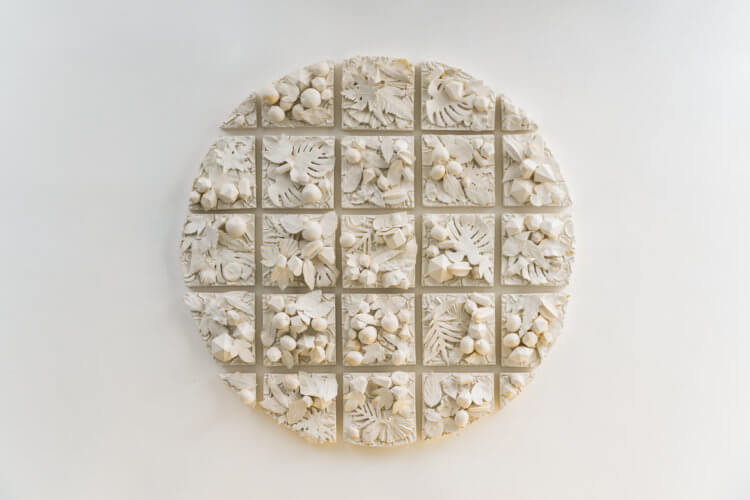
“Art was always something that was a focus of mine ever since a young age,” she says. “I took a pottery class in college and I fell in love with the wheel and I didn’t know what I was going to do with it, and I just kept taking classes and the next thing I knew I was a ceramics major,” she says.
“The power of the material is really magical. I started doing more sculptural work and when I started graduate school here in Miami, I wanted to focus on mold making and multiples. And so that’s where I became like a master mold maker,” she explains. “That was the focus of my thesis.”

“I even went to China on a residency and studied from masters there to see how it’s really done — which is insane. They’re like next-level technicians — they’re technically perfect. So I did a residency in a town called Jingdezhen, where Ai Weiwei produced all of his pieces” she says of the noted Chinese contemporary artist, documentarian and activist.
Jingdezhen is known for its ancient porcelain production for more than 1,700 years and is known as the “Porcelain Capital” because of the important role it plays in the domestic and international ceramic industry.
There, she observed production from start to finish. “It’s really all about, I guess, production in the way that you conceptualize a project and then you go to the clay person and then they give you the clay and then you give them the model and then they make the mold and then you take it to the glaze person and they do the glazing and take it to the kiln person. It was an interesting experience in not having my hand in everything and being more of a producer and seeing how that works.

“For some of the larger public works that I’m working on, that’s what I end up doing a lot is producing. It’s kind of collaborative in a way — collaborating with architects, designers, to help push my vision forward.”
Shapiro began by doing a lot of carving and repetition. She was attracted to patterns, specifically patterns in nature and trying to replicate the forms that she saw, as well as the different types of textures. “Of course when you do that by hand it goes very slow,” she says with a laugh. “So I wanted to study mold-making to help speed up my production and be able to make things that were larger or modular, or fit together. So it was really like a desire to kind of expand the technique to make works that would form patterns a little bit more easily rather and more perfectly.”
“The cool thing is that they’re all unique, even though they begin with molds. Each one is a unique object — so it’s more about speeding up the production to produce things that are larger or more installation based or sculptural.”
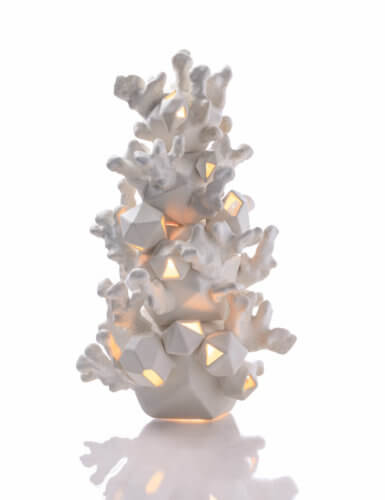
The pieces can be quite large. “Garden Portals,” one of the wall pieces now at the Todd Merrill Studio, is 9 by 6 feet in size, made in a high-fire glaze, so it can withstand the elements outdoors, though it can also hang indoors. The modular sculpture was created for the Fairchild Tropical Botanic Garden in Miami last year to reflect South Florida’s native ecology and cultivate stewardship through community-driven workshops that help bring the project to life, the description says.
Her works are both small and large scale. She processes and fires molded clay pieces affixing them onto clay tiles for some of the work. It casts native and exotic flora found in the Fairchild Tropical Botanic Garden in ceramic modular tiles. Shapiro foraged native plants, like corky stem passion flower, cycad, oak tree leaves, wild coffee and cabbage palm alongside tropical plants like philodendron, tree ferns, anthuriums and Alocasia.
She created silicone molds from the specimens and led a series of community workshops, where participants pressed wet clay into molds to create sculptural replicas. It was installed in one of the conservatories outside, and then it traveled to Design Miami last year, and now it’s in Tribeca, Shapiro explains.
“That would probably be one of the larger pieces. I’ve also done sculptural work that’s not permanent. I did a project a couple of years back here in Miami that was based on coral reef ecosystems — a large-scale monumental installation of 15,000 pounds of unfired clay that was built with the community.”
An ephemeral clay installation and social practice project, was constructed as an archway also at Fairchild Tropical Botanic Garden in 2019. Through a series of collaborative workshops for students and the general public, they modeled clay into the molds of plants and added them to a large post-and-lintel structure over the entrance doors to the Garden.
The project was taken down and the clay was recycled with water one week later to be used for another installation.
“Through these ephemeral compositions, it is my hope to cultivate in others a love of clay, to inspire environmental stewardship and to serve as a reminder of the fragile and finite existence of our society’s current relationship to its ecosystems,” she says in her description on the website.
“Through the medium and its impermanence, the final outcome mimics the cycle of growth and decay that occurs in nature, calling participants to cultivate environmental stewardship and mindfulness,” says Southampton and NYC-based Todd Merrill Studio, which represents Shapiro.
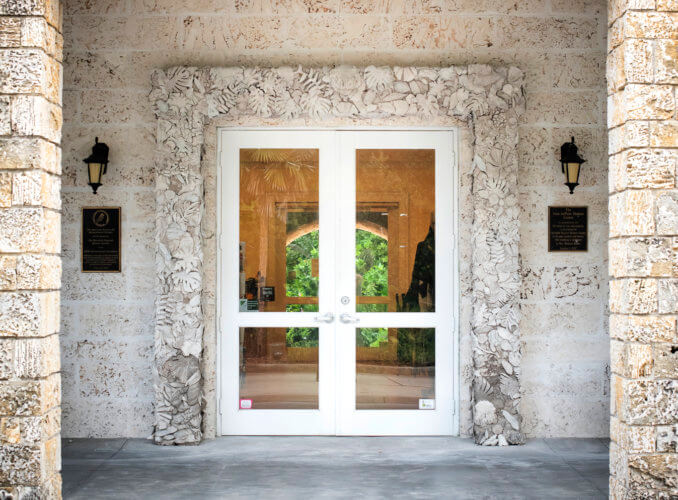
“Future Pacific” was on view from November 2020 to May 2021 at the Bakehouse Art Complex in Miami, and supported by a grant from the National Science Foundation.
Working with marine ecologist Dr. Nyssa Silbiger, whose research studied how human-driven stressors, including climate change, affect coastal marine ecosystems in the Pacific Ocean, they cast silicone molds of coral specimens to recreate them as textures in an immersive installation.
“Shapiro uses unfired clay to illustrate the fragility of coral reefs in response to human activity. The material gives visual form to the importance of Dr. Silbiger’s research: as the clay dries, cracks and tears apart, it mimics the degradation of the corals,” the description of the work says.
She calls it an experimental piece, as opposed to design work, which she says allows her the ability to explore scale without worrying about engineering or it being
permanent.
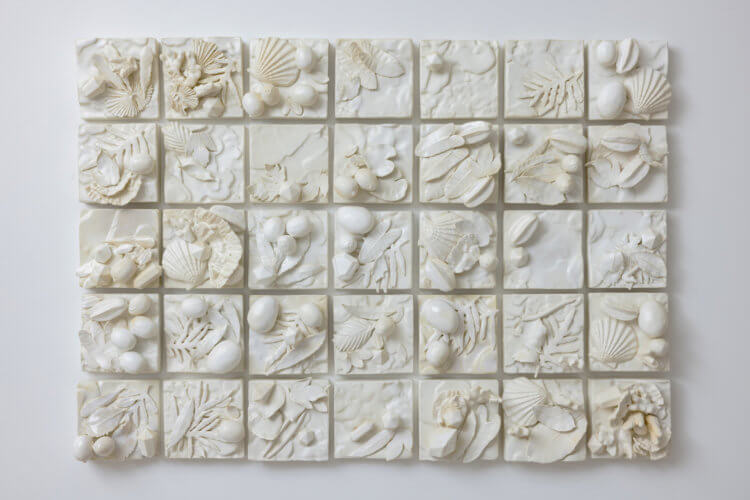
On larger projects, she hires people from the local community to help. She works out of a co-op space at the Bakehouse Art Complex, an up-and-coming Miami artist residency with 60 artists. The people who help are friends or former students or people in the community who are interested in clay. “I always try to spread the love to my community, when I can,” she says.
While her public pieces have gained traction, when it comes to the smaller pieces — tile work — she focuses on integration. “I’m really interested in working with architects and designers to think about work that is site specific — so made for one place as opposed to an application,” she says. “I really love to make work specifically for people and for places, whether it be public or private. And I always think about when I design . . . where they go and that it’s unique to that space.”
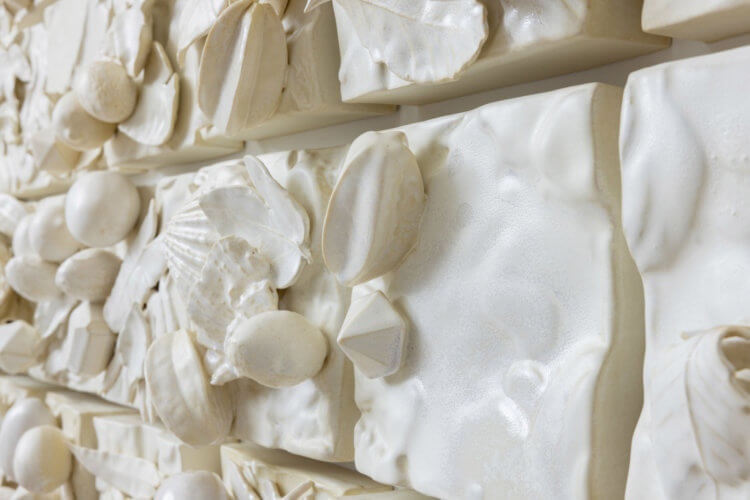
The size and scope of the project of course determine the length it will take to complete. One public art commission was awarded to her in 2020, “and the building isn’t even constructed yet!” she says.
“The quicker it needs to be the more molds I need to make. So it really varies depending on place to place and what it is. If the molds exists, I can crank it out pretty fast, or if it’s really custom, it can take longer.”
When it comes to color, her work has typically featured more whites, off whites and muted tones “so that the material looks more like marble or that they’re all like a monochromatic scheme, which sort of blends everything together,” Shapiro explains.
“Lately I’ve been doing some more colorful glazes. I studied glaze chemistry during my master’s degree. So I work with a lot of midrange glazes and I experiment with chemicals and oxides, and there’s a really amazing alchemy that happens with glazes. I do a lot of spray applications with overlap glazes and it takes a lot of testing and experimentation.”
Colors can take a little longer to develop that chemistry, she says. “But I do have a lot of amazing tests in my studio where I can customize the pieces for any color really.”
Among the projects Shapiro is working on now is a series of sculptural porcelain lamps and another tile piece for an exhibition sponsored by the Green Family Foundation in Miami, based on the tropical fruits of South Florida.
“I work with a lot of scientists to draw inspiration for my work — so it’s not just the plants. I’ve been working a lot with 3D scanning to basically use technology with the molds,” she says.
“There’s an element of technology in my work. I use digital fabrication methods to make a lot of these molds,” she explains.
The tile prototype is made in a 3D software, and then it is either carved into a block using a CNC, which is a computer numeric code, or it is 3D printed. Some of these new lamp forms in particular, I’ve been using 3D printed models of endangered coral reefs loaned by scientists that have been captured in the field, and then casting them in porcelain.”
Shapiro has been “integrating coral forms into the library of my mold system.” The next step for her will be to utilize the underwater textures in her work. “They look remarkably a lot like leaves.”
The molds themselves range in size, though, she says, “It’s a little bit limited based on what I can lift.”
The largest tile that she made last year was a 16-by-16-by-4. “That was so heavy. I actually had to suction it out with a bilge pump, which was not sexy,” she says with a laugh.
“Then some of the larger forms, I’m able to kind of tip them over. And that gets into really thinking about production of creating fulcrums and clamps that can actually pour them out. And this is why I’m constantly applying to a residency at John Michael Kohler Arts Center [in Sheboygan, Wisconsin], where they would give me free reign of the factory. I’m always applying to these residencies to get the opportunity to do that and learn more about how to make bigger molds and actually be able to handle them because they’re quite heavy.”
This article appeared in the latest issue of Behind The Hedges. Click here to read the digital version of the magazine. To read more Master Craftsman columns, click here. To recommend a Master Craftsman for a future issue, email TVecsey@danspapers.com.

